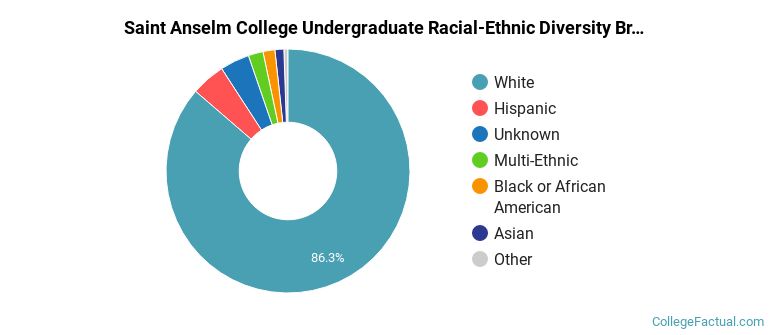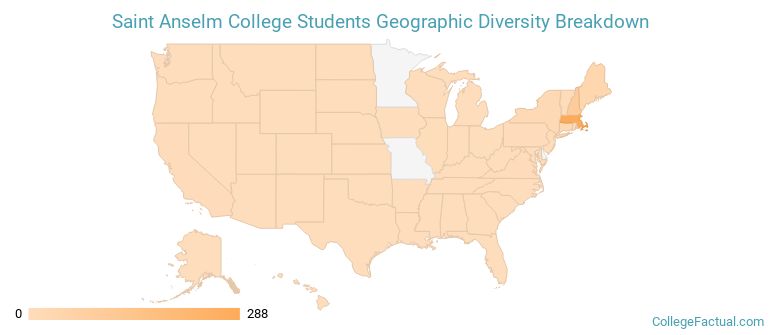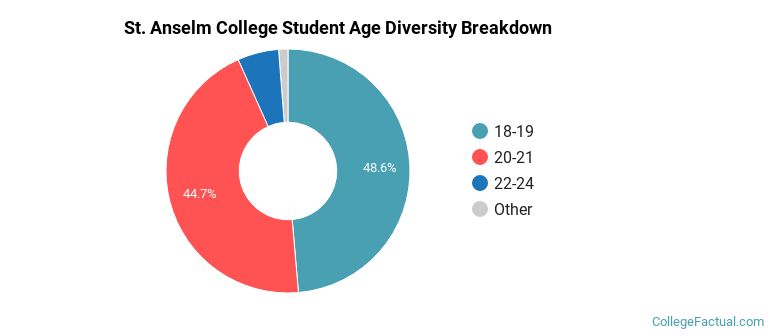 by our College Data Analytics Team
by our College Data Analytics TeamSt. Anselm College total enrollment is approximately 2,019 students.
Male/Female Breakdown of Undergraduates
The full-time St. Anselm College undergraduate population is made up of 61% women, and 39% men.

For the gender breakdown for all students, go here.
St. Anselm College Racial/Ethnic Breakdown of Undergraduates

| Race/Ethnicity | Number |
|---|---|
| White | 1,727 |
| Hispanic | 86 |
| Unknown | 74 |
| Multi-Ethnic | 51 |
| Black or African American | 34 |
| Asian | 24 |
| International | 5 |
| Native Hawaiian or Pacific Islander | 2 |
See racial/ethnic breakdown for all students.

| Race/Ethnicity | Number |
|---|---|
| White | 1,736 |
| Hispanic | 87 |
| Unknown | 76 |
| Multi-Ethnic | 52 |
| Black or African American | 34 |
| Asian | 24 |
| International | 6 |
| Native Hawaiian or Pacific Islander | 2 |

There are approximately 1,225 female students and 794 male students at St. Anselm College.
St. Anselm College ranks 496 out of 2,183 when it comes to geographic diversity.
80.81% of St. Anselm College students come from out of state, and 0.39% come from out of the country.

The undergraduate student body is split among 19 states (may include Washington D.C.). Click on the map for more detail.

| State | Amount |
|---|---|
| Massachusetts | 288 |
| New Hampshire | 99 |
| Maine | 37 |
| Connecticut | 27 |
| New York | 21 |
Students from 8 countries are represented at this school, with the majority of the international students coming from Vietnam, Canada, and United Kingdom.
Learn more about international students at St. Anselm College.
A traditional college student is defined as being between the ages of 18-21. At St. Anselm College, 92.21% of students fall into that category, compared to the national average of 60%.

| Student Age Group | Amount |
|---|---|
| 18-19 | 944 |
| 20-21 | 867 |
| 22-24 | 106 |
| 35 and over | 13 |
| 25-29 | 7 |
| 30-34 | 4 |
| Under 18 | 0 |
Footnotes
*The racial-ethnic minorities count is calculated by taking the total number of students and subtracting white students, international students, and students whose race/ethnicity was unknown. This number is then divided by the total number of students at the school to obtain the racial-ethnic minorities percentage.
References
Department of Homeland Security Citizenship and Immigration Services
Image Credit: By Ericci8996 under License